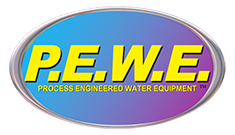Studies show freshwater makes up only 3% of all water on Earth. With the numerous manufacturing plants discharging industrial effluent in lakes and rivers, the amount of freshwater available to us is bound to reduce further. Industrial effluent contains toxic material which, if disposed of in bodies of water, leads to contamination. Companies have set up water treatment systems to treat industrial effluent and leave acceptable levels of impurities, by utilizing the chemical dosing system.
Pumping systems at these plants consumes 10% to 15% energy used, thus making chemical treatment the best option. However, untreated water contains impurities that occur in three states: colloidal, suspended, and dissolved matter. As such, different treatment methods are necessary for the removal of the impurities (or at least up to acceptable limits). One such method is chemical dosing. It is primarily used to remove the high levels of chemicals like phosphates.
The chemical dosing system delivers a chemical substance (iron, salts, or aluminum) into an aerobic treatment system to clean industrial effluent. It has a chemical feed station that has two metering pumps to control the dosing process. Wastewater treatment systems are required to dose very specific amounts of chemicals when removing impurities to achieve a balanced pH. The chemicals used are quite expensive, hence the need to control the number of chemicals applied.
Using too many chemicals may lead to wastage, while using too few creates compliance risk. Many plants rely on the flow to determine the level of dosing. While it is an effective measure, plants need to factor in the ups and downs and the actual effluent in order to dose the chemical accordingly. Alternatively, a series of samples may be taken throughout the day and analyzed to achieve a repeatable profile. The profile is entered into the dosing system to allow a specific volume of iron or untreated water to get dosed in intervals. Here are other factors that determine the type of chemicals required for dosing.
Quality of Raw Water Supply
The quality and consistency affect the coagulation process. Consistency is particularly critical for floc blanket systems that treat thin colored water. Even a slight change in the flow rate disrupts the floc blanket leading to the production of poorly filtered water.
Source of Untreated Water
The water source also affects the treatment process. Groundwater sources, for example, produce water free of biological contamination in the form of plankton, color, or organisms. However, such water has high levels of dissolved solid content like manganese and iron. The dissolved solids may exceed the permitted concentrations for drinking water, hence the need for treatment. Treatment, in this case, should separate the chemicals. Surface water from a reservoir or upland lake, on the other hand, maybe colored and acidic as it drains from bog lands. When treating such water, look for a chemical that contains an alkali. Water from a lowland lake is susceptible to algal blooms that cause an imbalance in chemicals in the water. These changes make optimal dosing and efficient solids removal difficult.
Nature of Impurities
Dissolved impurities result from decayed plant material, land erosion, sewage, and animal wastes, among other sources. Surface water sources are likely to contain dissolved and suspended organic and inorganic material and biological forms like cysts, bacteria, spores, and plankton. The water may also contain particulate impurities which have large sizes and can be removed from water by reducing velocity.
End Uses of Treated Water
Water treatment guidelines vary depending on the end-use of the treated water. Hospitals that provide kidney dialysis procedures, for example, may avoid using aluminum sulfate treated water. Iron-based coagulants are preferred for such applications.
Operational Guidelines for Chemical Dosing
-
- Look for chemical dosing system’s agents with few impurities: Dosing salts have toxic impurities like mercury, cadmium, and cobalt. Salts with the lowest levels of impurities are ideal for the process.
-
- Use telemetry: It is an essential component when using a chemical dosing system at a wastewater treatment plant.
-
- Use a sludge-level detector: Proceeding to second chemical dosing system’s stage before the final settlement increases the risk of discharging aluminum or iron-rich sludge to the environment. The sludge-level detector helps you identify such an occurrence to reduce the risk of pollution.
Now that you understand the factors that need to be taken into account during the chemical dosing process and know the operational guidelines for this process, you can proceed with water treatment operations and make the best decisions for your plant’s needs.


